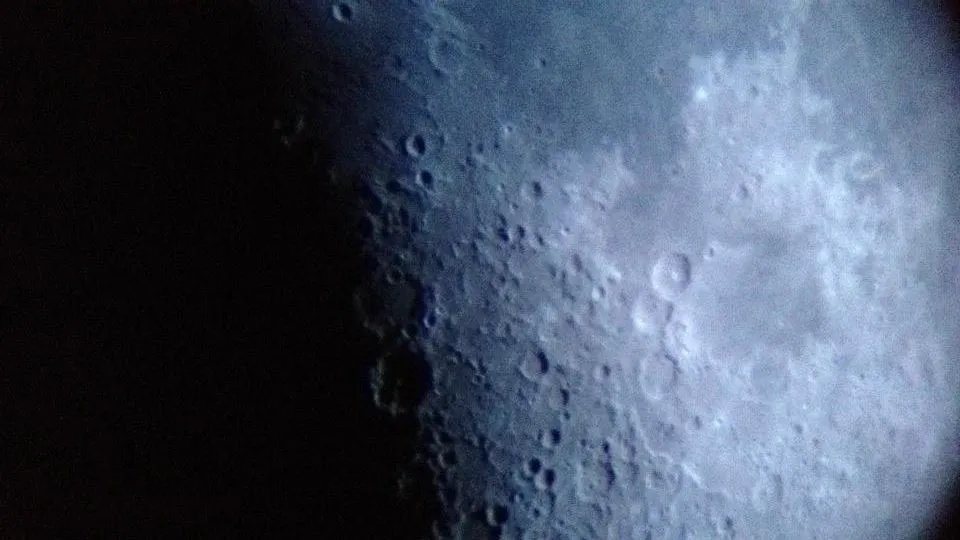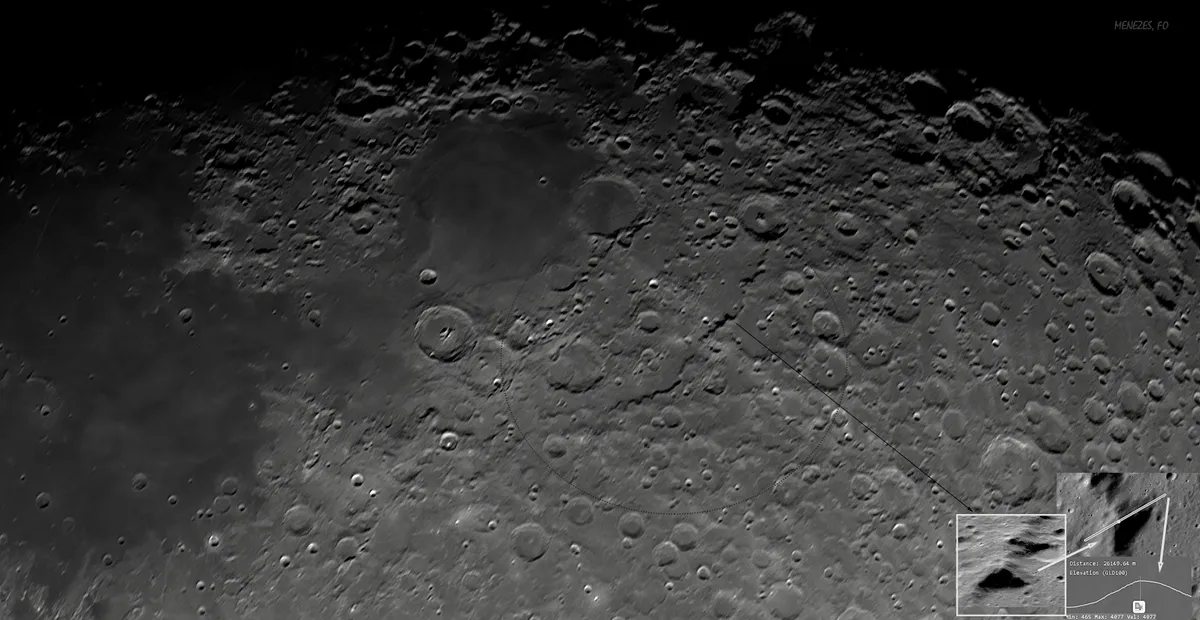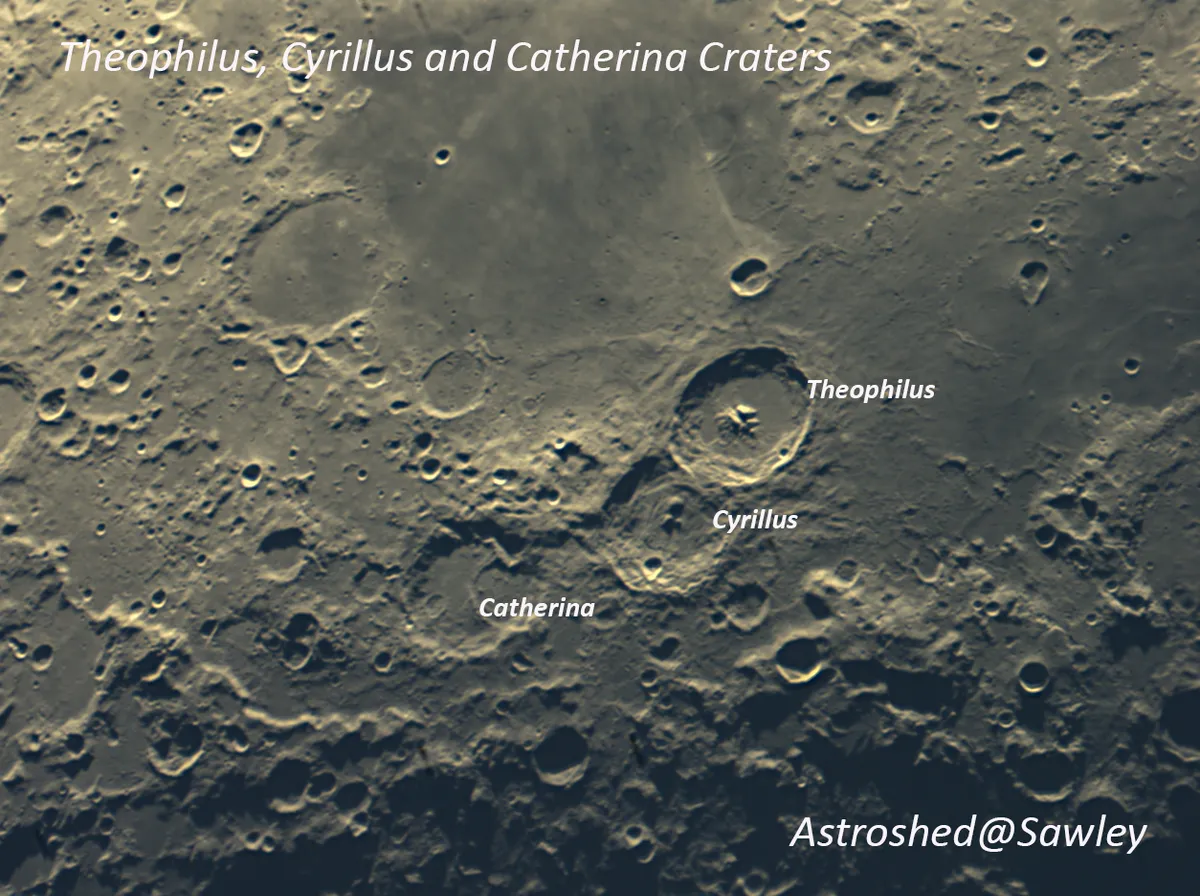Mare Nectaris is a basin located south of the Mare Tranquillitatis and west of the Mare Fecunditatis. Its diameter of 360km is approximately the distance between London and Kendal as the crow flies, and its area of 101,000 square km is only slightly less than that of the whole of England.
Most of the floor of this lunar mare is flat and pockmarked with craterlets. A bright ray from the distinctive 88km-wide crater Tycho slashes across it, creating a bright stripe that runs diagonally from the southwest to the northeast.
For more info on lunar observing, read our guides on how to observe the Moon and the best features on the Moon.
Facts about Mare Nectaris
- Size:360km
- Age: Between 3.85 and 3.92 billion years
- Location: Latitude 15.0°S, longitude 35.0°E
- Recommended observing equipment:4-inch telescope

Tycho is 1,400km southwest of the Mare Nectaris. Despite being bordered by some amazing features, the largest distinct crater found well within its bounds is bowl-shaped Rosse.This 12km-wide feature is easy to spot with a 4-inch telescope.
Close to the northern shore is the larger (48km wide) but less distinctive Daguerre, which has been flooded by Nectarian lava and is now classified as a ghost crater.
Such features are best seen when the lighting is oblique, a situation which occurs when the terminator is nearby. Seen under direct illumination, Daguerre almost disappears from view.
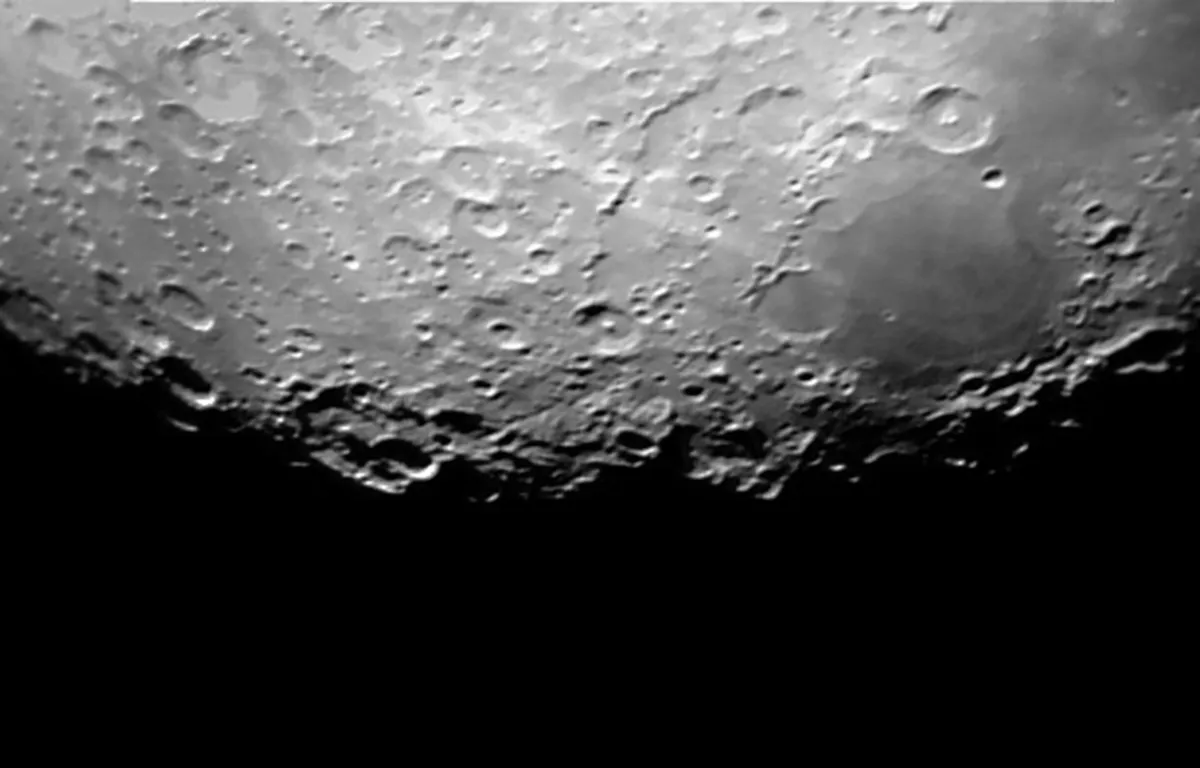
West of Daguerre and close to the northwestern shore is 30km-wide Mädler, a distinctive crater that possesses terraced walls and is easily seen with a small scope. A raised central ridge, running north to south, is visible under high illumination.
Mädler lies to the east of 104km-wide Theophilus, a famous crater rich in detail.It is the northernmost of a trio of large craters that arc around the western boundary of the Mare Nectaris.
The middle crater is 98km-wide Cyrillus; the southern end is marked by eroded, 104km-wide Catharina.
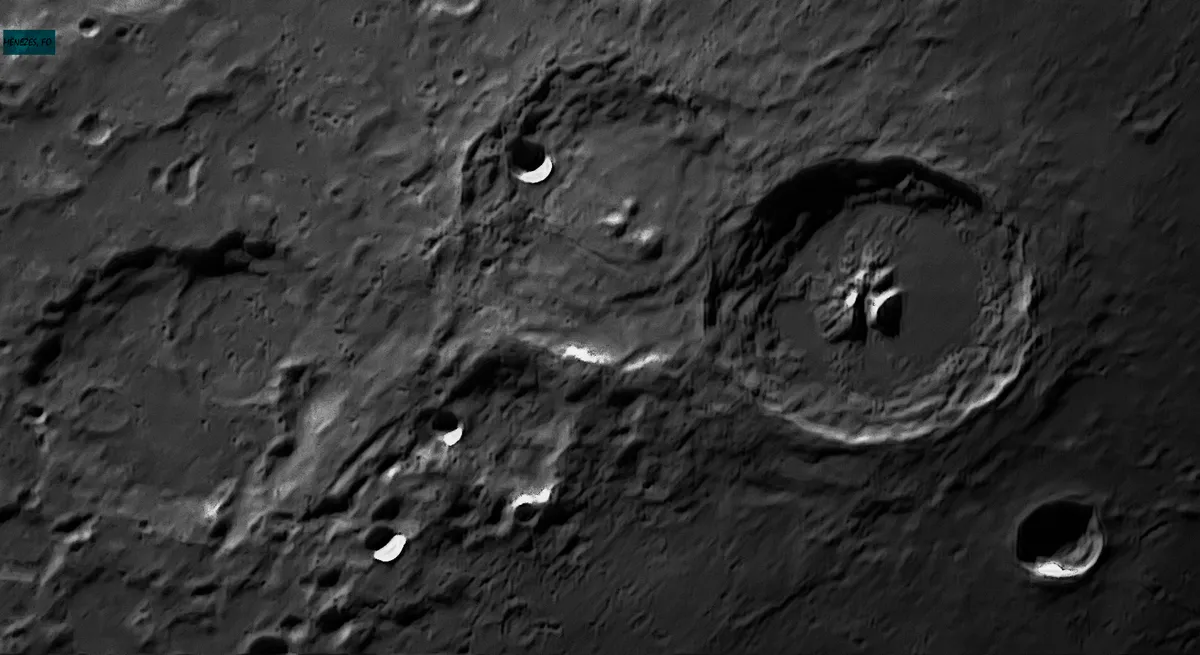
The sea’s southern boundary is interrupted by 128km-wide crater Fracastorius, which has also been flooded with lava.
Its northern boundary is virtually missing, marked only by a region of rough terrain best seen when the terminator is nearby. As a consequence, it looks just like a smooth extension of the mare.
The eastern boundary is marked by 34km-wide crater Bohnenberger and similar-sized (30km) BohnenbergerA.
A wrinkle ridge concentric with the mare boundary can be seen west of Bohnenberger when the lighting is oblique.
A small scope will reveal the 260km mountain range that divides the Mare Nectaris and the Mare Fecunditatis. Northwest of the range lies 34km-wide crater Gaudibert.
Below is a selection of images of the region around Mare Nectaris captured by astrophotographers and BBC Sky at Night Magazine readers. For astro imaging info, read our guide on how to photograph the Moon.
And don't forget to send us your images or share them with us via Facebook, Twitter and Instagram.
